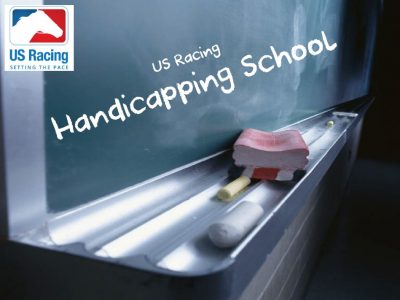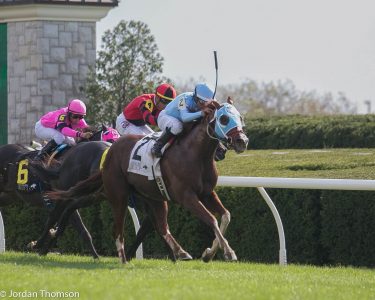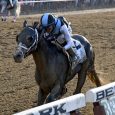By Ray Wallin
The Cambridge Dictionary defines “reach” as “to arrive at a place, especially after spending a long time or a lot of effort traveling.” Anyone who makes their living playing the races will tell you that the path to consistent profits at the track takes time and a lot of effort.
Right now you are thanking me for taking the wind out of your sails, thinking that there is no quick and easy fix to making money at the track. But before you get dejected and turn to selling a kidney to turn a profit, here are a couple of keys that will help you turn a profit at the track.
Remember
I used to spend a lot of summer weekday afternoons at Philadelphia Park, which is now Parx Racing. Like every track, you have the same characters and stereotypes regardless of where you are.
 I’d split my time between the paddock, rail, and a carrel with a monitor on the first floor. Through the course of my normal betting day I would encounter the Philly version of Rail Guy. His name was Augie, but you would swear that he and Rail Guy were cast from the same mold
I’d split my time between the paddock, rail, and a carrel with a monitor on the first floor. Through the course of my normal betting day I would encounter the Philly version of Rail Guy. His name was Augie, but you would swear that he and Rail Guy were cast from the same mold
One afternoon in particular, Augie was having a rough day. He wasn’t shy in letting everyone know about it either. After every race he was giving a dissertation on why the horse that won got the best of him. He was full of after the fact nuggets of wisdom of pointed out the sharp connections that led to his contenders losing. “Lake is deadly off the claim, how could I have missed that,” or “never trust those Penn shippers,” were a few of his rants.
After seven races of all these reasons I asked him a simple question, “if you know so much about the horsemen and the connections, why don’t you remember to use this information when picking your contenders.” He looked like a deer in the headlights.
Had Augie remembered what he knew about the local connections and performance of horses shipping in from Penn National, he would have been making money instead of losing consistently. He had trouble retrieving this information from his memory. If this describes you, you need to write down these nuggets of information so you don’t have to try to remember them, remember to write them down.
Evaluate
As handicappers we need to ask ourselves a few questions when looking at a race. Often we have more than one angle or figure that indicates we have a potential play. Which angle or factor is more important? What are the pros or cons of one angle over the other? Is there a better solution than using what you are using?
We have to make decisions and judgments based on the race criteria and the data that is before us. The successful handicapper does his/her homework and finds what angle performs better or knows to make both horses contenders in the race.
Handicapping is about making judgment calls. Even our best angles don’t win every time out. It’s knowing when the situation is right to either use the horse or pass the race that is the important result of your evaluation.
Apply
You are a good handicapper. You have a routine that you follow so you don’t miss out on that long shot that has hidden form after a couple of troubled trips and bad beats. You know that not every race condition is the same and that there is no one-size-fits-all approach to handicapping everything from 2-year-old maiden first time starters to older conditioned claimers. You know that even if you like a horse because of an angle or a figure that you need to look to see if he will get a favorable pace in today’s race.
You know these things, but do you apply them?
Remember to ask yourself which approach you should use for this particular set of race conditions. What would happen if that lone early speed horse can’t get loose on the lead early? How would you use pedigree information or track par times in this situation?
You have all the tools, now apply them to your handicapping.
Create
This is my favorite part of handicapping. I am always looking at races and thinking about ways to combine elements of my handicapping or create a new take on quantifying pace, class, or another factor. I do post-mortems after the race to see if there is some factor that I missed or failed to evaluate. Sometimes I find a new trend or factor that is worth tracking and tweaking.

Horse Racing – Photo Credit: Jordan Thomson
I find more losers than winners when creating new angles or figures. But even in failure, I have found some positives. I have found angles that perform so poorly, they are a deterrent to playing the horses that meet the criteria. One example of this is horses that are first time geldings. While they do win occasionally, they severely underperform based on their projected probabilities.
Get creative, you may find the next best secret angle or something that throws up red flags for you to stay away from.
Hash It Out
It is time to pull all your handicapping together and track your performance. Did you win? Did you lose? Did all your contenders get slammed right out of the gate and never have a chance in this race?
Now is when you need to ask yourself what you learned from this race or day of races. How can you apply this to future races? What will you do differently next time you play this track, encounter a similar condition or situation, or run across the same couple of conflicting strong angles in a race? How will you move forward to the next race day card you handicap?
Good handicappers pick winners. Great handicappers continue to improve themselves and their handicapping. By staying disciplined and following a couple of keys, you too can REACH the next level of profits with your handicapping.



